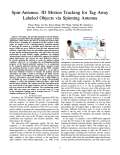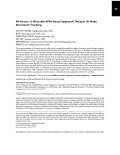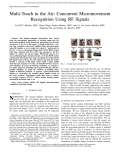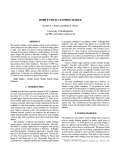Spin-Antenna - 3D Motion Tracking for Tag Array Labeled Objects via Spinning Antenna
文件格式: PDF大小: 2.58MB页数: 9
RF-ECG - Heart Rate Variability Assessment based on COTS RFID Tag Array
文件格式: PDF大小: 2.08MB页数: 26
RF-Kinect - A Wearable RFID-based Approach Towards 3D Body Movement Tracking
文件格式: PDF大小: 3.05MB页数: 28
Multi-Touch in the Air - Concurrent Micromovement Recognition Using RF Signals
文件格式: PDF大小: 2.61MB页数: 14
MOBILE VISUAL CLOTHING SEARCH(南京大学:曹春)
文件格式: PDF大小: 4.31MB页数: 6
聊城大学:《MATLAB语言及应用 MATLAB Language and Application》课程教学资源(课件讲稿,下)第9章 SIMPowerSystem工具箱
文件格式: PDF大小: 2.43MB页数: 49
7.1 信号及其表示 7.2 信号的基本运算 7.3 线性时不变系统 7.4 傅里叶(Fourier)变换 7.5 IIR数字滤波器的设计方法 7.6 FIR数字滤波器设计 7.7 信号处理的图形用户界面工具
文件格式: PDF大小: 3.75MB页数: 95
聊城大学:《MATLAB语言及应用 MATLAB Language and Application》课程教学资源(课件讲稿,下)第5章 SIMULINK仿真工具箱
文件格式: PDF大小: 4.04MB页数: 130
4.1 曲线拟合与插值运算 4.2 数值微积分 4.3 线性方程组求解 4.4 常微分方程的数值求解 4.5 MATLAB符号计算 4.6 级数
文件格式: PDF大小: 1.59MB页数: 98
聊城大学:《MATLAB语言及应用 MATLAB Language and Application》课程教学资源(课件讲稿,下)第3章 MATLAB绘图(图形图像处理)
文件格式: PDF大小: 2.97MB页数: 79










